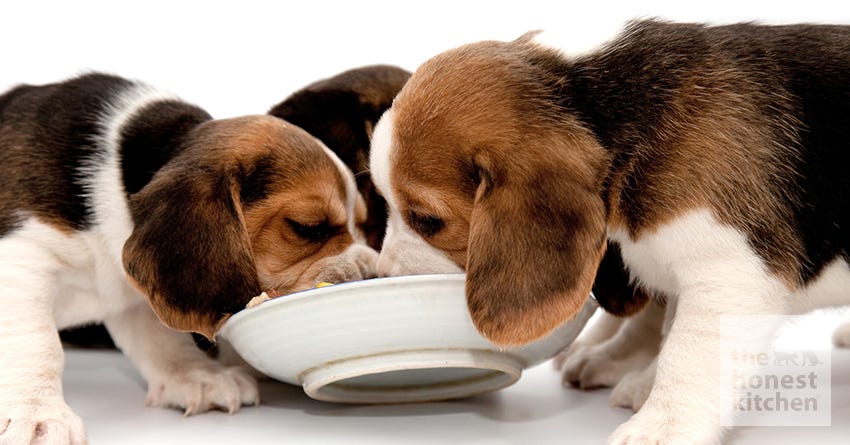We work so hard with our animals to make sure they are calm, loving, and well-behaved.
But sometimes, aggression or poor behavior can rear its ugly head. Often, this requires owners to take a step back and to examine their own behaviors and to course correct effectively. If your pup has always had issues around food or is just starting to show signs of food issues, read on for tips on how to correct quickly.
Issue 1: Food Aggression
Food aggression occurs when a dog feels the need to fight for their food, to steal other animals’ food, or becomes territorial over where and by whom they are fed.
Oftentimes, food aggression is something that owners don’t think about until an issue occurs. Unfortunately, this puts owners in a reactive state instead of an active state. The best and most ideal time to address food aggression with a dog is when they are a puppy. This can be done in several different ways:
- Feed the puppy with other, well-behaved, dogs so that they can learn that it is safe to have their food around others.
- Feed the puppy after an “alpha” dog has eaten so that the puppy learns submission and also sees that the alpha dog's model behavior is rewarded.
- When the puppy is eating, calmly remove the food and make the puppy sit for a few seconds before returning his or her bowl. This shows them that it’s ok for a human to touch their food and that their food will be given back.
- Pet, touch, and talk to your puppy while they’re eating. This way, if another adult or, perhaps, a child messes with or touches your puppy or dog while they’re eating, they won’t take issue with the contact.
If your dog is no longer a puppy and is starting to show signs of food aggression, all of the above strategies can be used. You might also consider: Feeding your dog in different places around the house. Sometimes food aggression can stem from a territorial response.
While you are present, have a friend feed your dog and practice the aforementioned strategies so that your dog can become comfortable with other people touching his/her food. If the dog is aggressive with other dogs, consider feeding them separately for a short amount of time to give them space. Then, gradually, begin feeding them together again in a new location. Make sure that they sit and lay down before you release them to eat since this shows them that you are in charge and you will protect their food should the other dog try to take it.
Consider professional help from a dog trainer if the problem persists.

istockphoto/dimarik
Issue 2: Food Obsession
those from The Honest KitchenFood obsession can, but does not always, lead to food aggression. Essentially, food obsession occurs when a dog fixates on food and typically stems from their owners giving them too many “human treats”, allowing them in the kitchen, and allowing them to beg at the dinner table. This can lead to the dog getting up on the counter to steal food, opening cabinets or even the refrigerator to find food, or getting into the trash.
This behavior can be corrected but the owner must be willing to retrain not only the dog but themselves as well. Here’s where to start:
- If you have been giving your dog table scraps or “human treats”, this should stop.
- Buy dog treats, like those from The Honest Kitchen, and start using them to reward your dog when they behave well. Call them by a name that you will use consistently such as “treat”, “cookie”, or “bone”. Your dog will begin to recognize that these are his/her treats and not human treats.
- If you have allowed your dog to be in the kitchen or dining room, they should no longer be allowed in these areas. Create a command such as, “Out of the kitchen” or, simply, “Go lay down”. If they obey your command immediately, reward them with their dog treat.
- While you are preparing or eating food, give your dog a puzzle ball or bone and allow them to play with/chew on it in the living room. This gives them the sense that they are a part of your eating ritual while also setting boundaries.
- If your dog has a tough time remaining out of the kitchen while you’re cooking, consider putting them outside with a bone or, if possible, put a gate up so that they cannot come into the kitchen.
The goal with food behaviors is to show your dog that you are in control, their food is safe, and that they don’t need to be aggressive, steal food, or beg because they will be given plenty of dog food and treats.
That said, setting firm boundaries between dog food and “people food” while also ensuring that your dog feels comfortable and safe eating around other dogs are steps in the right direction.





